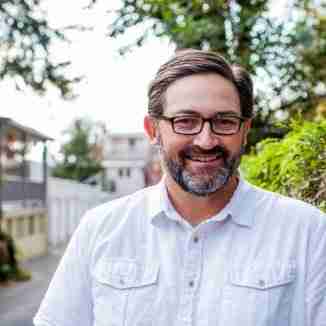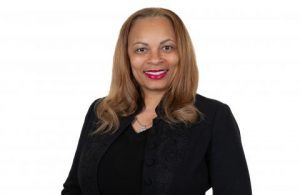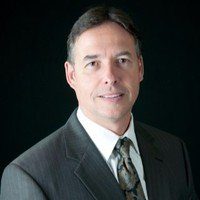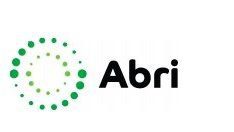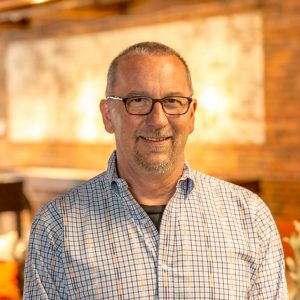
In Conversation: Ken Malone, Ph.D., Managing Director, Early Charm Ventures and CEO of SilcsBio
A university researcher discovers a great idea for a potential commercial technology. She develops it in the lab, builds a prototype and a small team, wins a few pitch competitions, and earns a few non-dilutive grants. Then, it’s time to go out and get venture capital (VC) funding to propel the company into the future and a big payout exit.
This is the path that many entrepreneurs looking to commercialize a product or technology pursue. But the VC model isn’t the only option—there are many avenues to success, though some are less obvious and at times overlooked.
Across the BioHealth Capital Region’s (BHCR) rich and diverse life sciences ecosystem there are technologies sitting in limbo not being developed because they don’t fit the VC business model. While these technologies might not have blockbuster returns potential, they still have value to entrepreneurs and the end user.
Enter Ken Malone and his company Early Charm Ventures (Early Charm), which is located in Baltimore, Maryland. Malone and his team specialize in identifying these valuable but overlooked technologies, executing an efficient tech transfer process, and then bringing these products to market.
Malone is the Managing Director of Early Charm and the CEO of SilcsBio, one of the 37 portfolio companies that operate under Early Charm’s novel Venture Studio Model. We recently caught up with Malone to discuss a wide range of topics, including the Venture Studio Model, SilcsBio, and the growing life sciences and technology ecosystem blooming in Baltimore.
You bring quite a diversity of experience to your roles at Early Charm and SilcsBio. Talk a bit about your career journey leading up to this point.
I am a PhD polymer scientist by training and spent the early part of my career in the heavy chemical industry in manufacturing, business management, and M&A.
When my dissertation advisor became President of the University of Southern Mississippi, I decided to leave the chemical industry to help him run the university as, among other titles, Chief Operating Officer. I became heavily involved in economic development there.
While at Southern Miss I became interested in startups and studying innovation systems. I began getting involved with startups myself and this is where we developed some new university startup models. One of those was the Venture Studio Model, which is the core business model of Early Charm.
I eventually left Southern Miss and settled in Baltimore where I launched Early Charm Ventures along with Kelli Booth ten years ago. We’ve grown from two people to about 60 team members today with 37 portfolio companies.
What is the Venture Studio Model and how is it different from a traditional venture capital approach?
The Venture Studio Model exists because the incubator/accelerator and Venture Capital Model doesn’t work for most idea There are tens of thousands of technologies and inventions that sit on the shelf because tech transfer offices think there is a Valley of Death and the only way through is venture capital.
We believe that there is no Valley of Death and that venture capital is a distraction for the overwhelming majority of technologies. Now there are technologies that do require venture capital—if I’m going to launch a therapeutic drug or start Uber I have to have a huge bucket of money because I need to get through clinical trials or scale everywhere all at once. However, the large majority of technologies are exactly the opposite; they can’t be accelerated by venture capital and a very large portion of these technologies don’t require a huge amount of capital to get to revenue.
These ignored technologies tend to be smaller, niche market opportunities that could be $5M, $10M, or $20M. We understand why tech transfer offices don’t like these technologies—because they don’t generate big royalty checks. I don’t blame them in any way for focusing only on the billion dollar opportunities.
But if I own a $2M business generating 20% profit margins, that’s a pretty good paycheck every year. We came up with a way to generate a lot of revenue off of ‘small ball’ opportunities. If you have dozens of these small opportunities and you cluster them around each other and have synergy between them you can have a common team that works across the entire portfolio.
The core of Early Charm is that the 37 companies in our portfolio have zero employees. All of the people work for Early Charm and we share them where they are needed. The 37 companies are clustered around four tech areas with a lot of synergy within each cluster: advanced materials, drug design, technologies in aquaculture (Blue Economy) and engineered products.
This is the Venture Studio Model.
What made SilcsBio an attractive opportunity to help launch Early Charm Ventures?
SilcsBio was our first portfolio company in Baltimore. At the time we didn’t have the synergy that we have now; we knew we were going to build that.
SilcsBio was attractive for several reasons. First, it had a low cost to enter the market. We were selling software to help companies with drug design. We could sell on day one of the operation and we didn’t need a ton of money to get started. We also liked that the SILCS (Site- Identification by Ligand Competitive Saturation) platform worked in an area we knew—materials science and protein modeling.
SilcsBio’s platform works similar to how a mechanical engineer or an architect creates the drawings for a widget or a house using CAD software. We do the same thing except we are mapping out a protein’s structures; we identify hot spots where a drug could attach to a protein effectively.
How do SilcsBio’s platform and services improve the drug development process?
SilcsBio’s platform and services help pharma companies see things they would not see with another tool; we can help companies see the way a drug binds and by doing that you can design a drug with the thought process of failure modes during clinical trials.
Ultimately, SilcsBio’s platform and services help reduce the risk of clinical failure by allowing the developer to see things that might not ordinarily be seen.
Entrepreneurs often start companies with an acquisition or an IPO as the ultimate goal. Do you have this same vision for your most profitable/successful portfolio companies?
There is this really bizarre belief in the life sciences world that a business is only successful if there is an exit.
I grew up understanding that businesses make something and sell it and make money by turning a profit every year. At Early Charm we never plan to exit one of our companies. If you want to run a business well you need to stop worrying about how to exit and focus on running the business right.
When we’re thinking about any of our businesses we’re thinking about doing things the right way. In addition, because we have a lot of synergy between our companies, they are generally worth more to us than anyone else.
I come from the heavy chemical industry where a $70B company had hundreds of business units and any one of these units could have been its own company. They didn’t spin these companies out because it was more efficient and valuable within the management matrix of the parent company.
At Early Charm we take this approach. We are still a small business. It’s funny to hear questions about exiting; I just think the exit focus is a fallacy in many cases. We are generally supermajority owners and founders of our companies so we have appropriate control.
People want to put us into a category so they call us venture capital or an accelerator. We just aren’t either. We’re OK with the term Venture Studio but most people don’t know what that is. Some people get uncomfortable when they can’t put you in a box. The reality is that our innovation is our business model.
We are doing this differently than any other company out there and we’re on a mission to prove that we’re the much more efficient model for tech transfer.
As you can imagine we’ve done the tech transfer process more than 37 times so we’re pretty good at it.
For the typical new entrepreneur, it takes three-four months to get the transfer done; we’ve done it in a few hours when we’re working with universities we’re familiar with. We know what each tech transfer office is willing to take and what they won’t and we have relationships with each office. We have a list of tech transfer offices that are super easy to work with and we spend most of our time working with them.
There’s been quite a bit of buzz about the Port Covington development and how it will help grow Baltimore’s bioscience hub. Early Charm has been in Baltimore for a decade. What’s your take on where Baltimore’s life sciences ecosystem is headed?
Within the life sciences, Baltimore is on an incredible track. Every year there’s more growth, bigger investments, more exits, more of all those things that indicate success. I don’t see this slowing down at all. A steady rate of growth will continue.
I know of several sizable investments that will support this growth. There’s always a role for the state government to support growth. However, what I see today is that the Baltimore life sciences sector has moved from being government led with private businesses playing a secondary role to being business led with government following and asking ‘How can we help?’
But here’s the interesting challenge for Baltimore.
There is a natural growth pattern where venture capital comes in and technologies take off. Venture capital is great at wealth generation for a very small segment of the population and some people are fine with that. I am not and there’s a sizable group of us in Baltimore that love the city’s culture and we don’t want it to become Boston or Silicon Valley.
We want Baltimore to stay Baltimore and to do that we have to find ways to grow equitably. Equitable growth doesn’t come through venture capital.
We need to be more focused on manufacturing, production and sustainable job creation because that’s what creates long term opportunity and stability. This is not a money problem; it’s about choosing what you invest in.
- About the Author
- Latest Posts
Steve brings nearly twenty years of experience in marketing and content creation to the WorkForce Genetics team. He loves writing engaging content and working with partners, companies, and individuals to share their unique stories and showcase their work. Steve holds a BA in English from Providence College and an MA in American Literature from Montclair State University. He lives in Frederick, Maryland with his wife, two sons, and the family dog.


